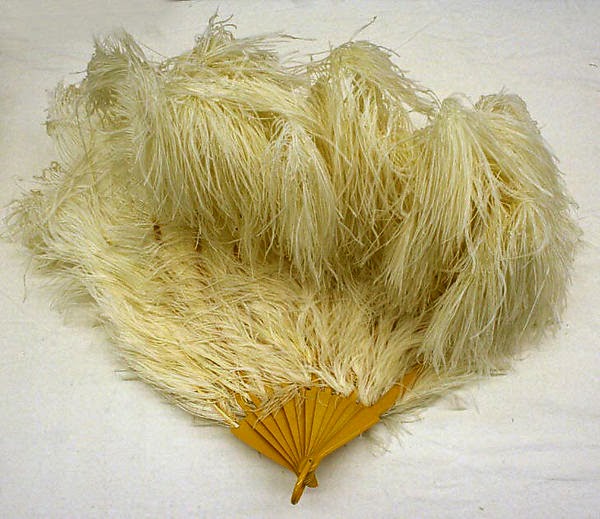This effort of their house was created in 1928, and bears so many of the signatures of their work that it was only natural to present it to you. It comes to us from the vast, and varied collection at the Metropolitan Museum of New York. Many thanks to them, and their conservators for caring so well for this.
But lets begin underneath it all. This is the under-slip with its built in panniers that was one of the hallmarks of their design style. Made up in cream silk chiffon, the slip has two pairs of celluloid pieces on either side to create, and support the distinctive shape.
The dress has large insertions of real silver lame', (now tarnished), as part of a dress of silk organdy. The gown is embroidered over its surface with a narrow metallic cord in a floral, and foliate design. The dress is further decorated with another of the house's signature techniques, ribbon work. Looping swags of silk ribbon roses, bud and leaves are worked in multiple colors over the skirt, in relief, and in volume, and on the silver lame' regulation length train.
The shoulder attaching train has an over-layer of organdy cut in large deep points, and embroidered, like the dress, in foliate forms out of metallic cord.
By 1928, such looks as this one, with its side panniers of the Robe de Style fashion, had become passe', and the sleeker, leaner looks that would dominate the 30s began to emerge. So this dress, though undeniably lovely, was an idea on its way out, already supplanted by other forms. In that, there is a subtle subtext. We are looking here, not only at a dress who's idea had already passed, but a physical symbol of a way of life that was rapidly vanishing. By the mid 1950s the official English court presentation levy would be gone, never to return.
A fragile and beautiful thing, meant for one time, and one time only. We can just hope that the lady who wore it, felt as beautiful inside, as this dress intended to make her look outside.
As a final aside, to give you an idea of just how many of these things they turned out, here's another court presentation dress from the same year. This dress is also in the Met collection. There are certainly differences in the design, from one to the other, but the materials, types of techniques and decorations are the same. Organdy, chiffon, lame', ribbonwork flowers, thin metallic cord, shoulder mount train, panniers.
It was clearly an easy, go to look for them.














I admire the extravagance, luxury, and attention to detail, but I've never liked the odd proportions of this styling, which combines the boyish, flat-chested, dropped waist of the 1920s with a modified side-flair skirt right out of the 18th century. I just don't know what woman's body it would actually flatter.
ReplyDeleteOh, I agree completely. Its one of the many style aberrations that have occurred over time, that actually gained popularity, it would clearly only look even remotely well on someone of reed-like slimness.
DeleteWonderful! I just love this dress - and have been vaguely planning to include it in a post myself; thank you for beating me to it. I agree that few woman had/have bodies that are really suited to the proportions of this style, but I totally love the strange combination of the Garçonne shape with added pannier; I love the whole robe de style concept of the Twenties.
ReplyDeleteThanks for including the second - also lovely, but less successful - gown, whose lamé is less tarnished; it gives a better idea about what the first gown must have looked like originally.
Well, you've beaten we to it more than once, so I suppose it was my turn. (grin) And thank you for seeing what I saw, that it was a less successful design. Frankly, that was what made me choose the one I did. I loved the yellow in the second dress, but the whole effect was twee and overwrought.
Delete